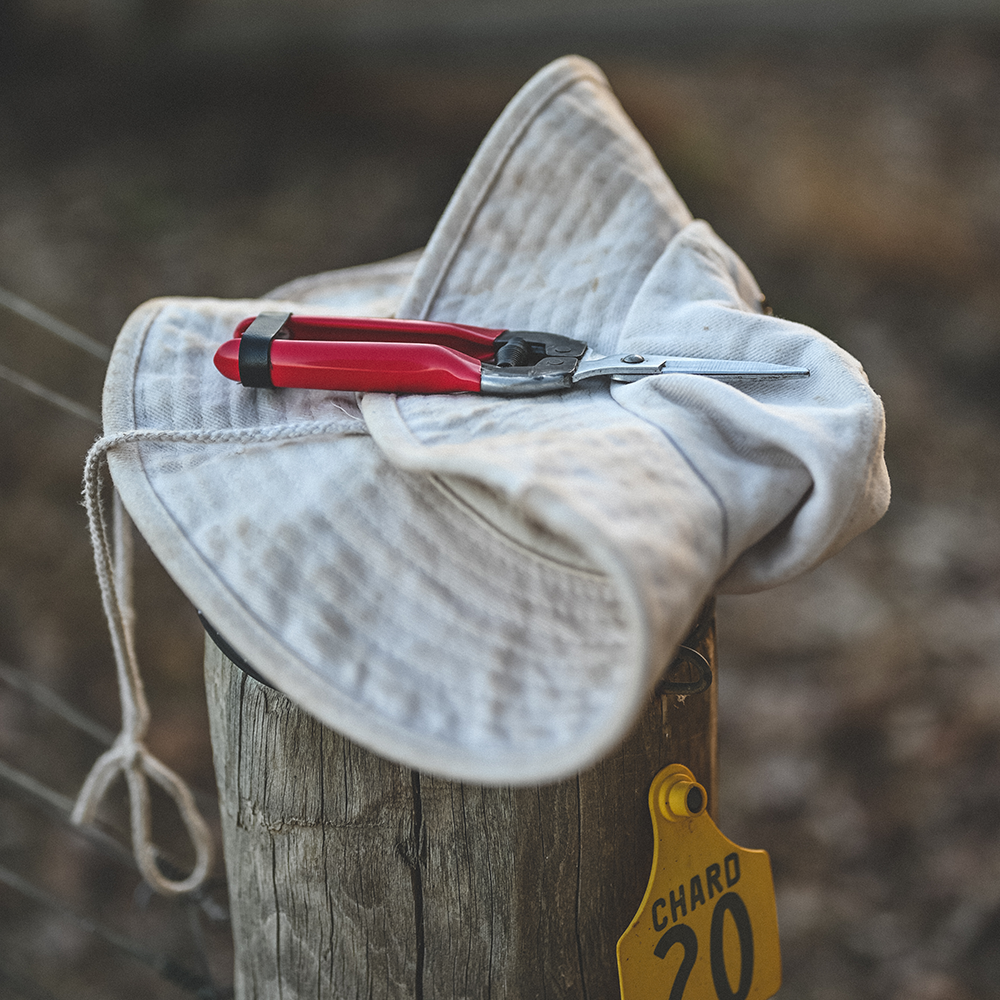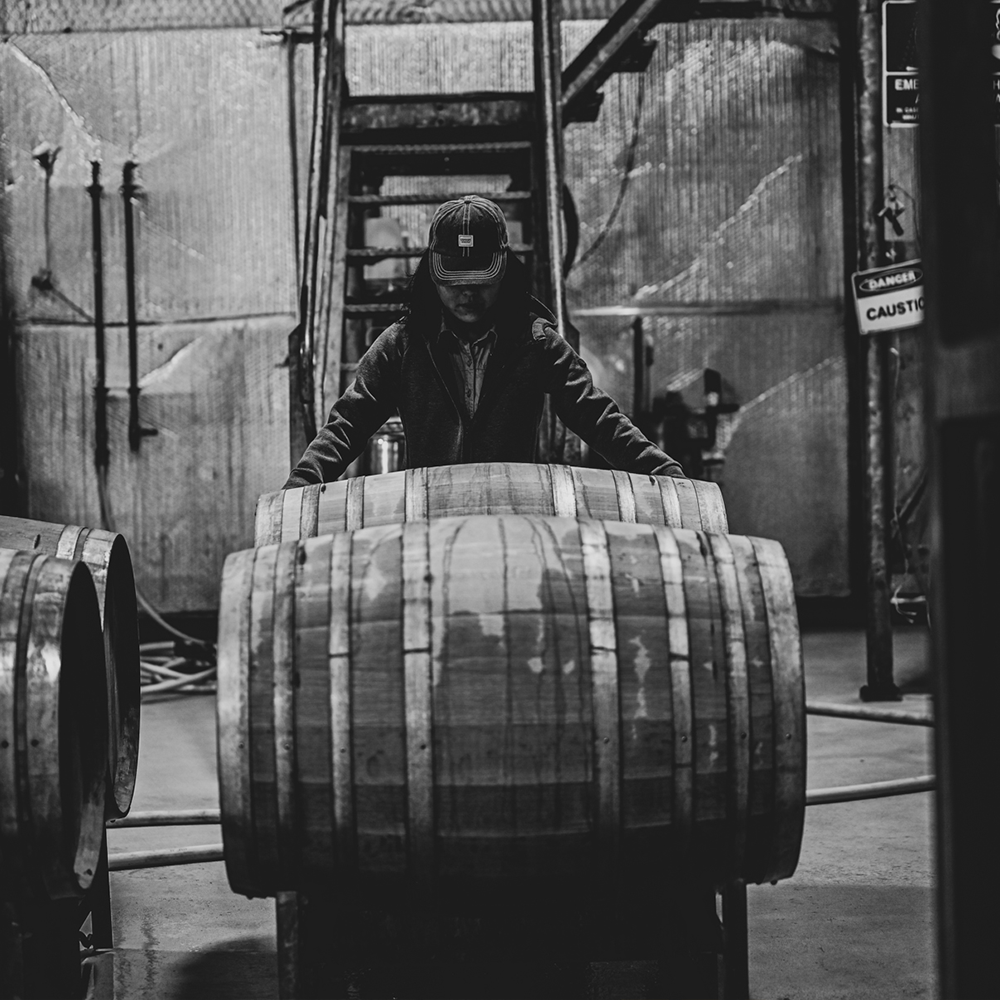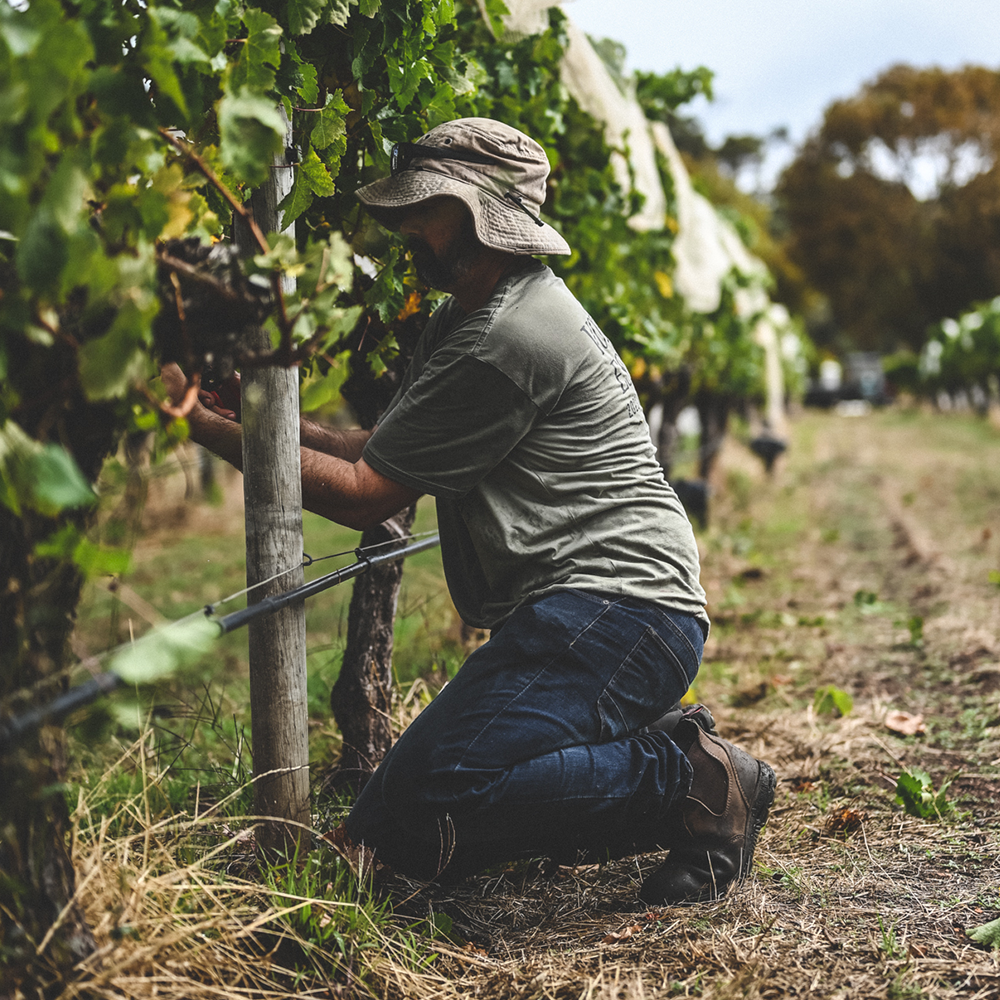Blog
HALLIDAY HIGHLIGHTS
The results of this year’s edition of Halliday Wine Companion are in, and we’re thrilled to share that along with some absolutely fantastic scores, we have once again been awarded a five-star rating:
"Outstanding winery regularly producing wines of exemplary quality and typicity. Will have at least two wines rated at 95 points or above and has typically held a five-star rating for the previous three years" – Halliday Wine Companion.
We were particularly excited to see two of our wines receive gold, with the 2021 MJW Chardonnay and the 2019 Cabernet Sauvignon scoring an impressive 96 points and 95 points, respectively.
2021 MJW Chardonnay – 96 points | GOLD RATED
Often a powerhouse of a wine, but this vintage, it's not too big, not too light, just right. The palate is refined and feels effortless as the citrus flavours mingle with grilled-almond lees, clotted cream and some oak spice offering savoury nuances. There’s certainly texture, but the fine line of acidity just reins in everything as the finish lingers. It feels cool and calm.
2019 Cabernet Sauvignon – 95 points | GOLD RATED
There’s such a distinct Voyager Estate character to this wine, largely because the fruit comes off the estate vineyard: two blocks, one planted in 1978, the other in 95. It’s heady with tobacco leaf, nori, dried herbs, mulberries and cassis. It’s savoury and supple and the tannins feel mellow and shapely, there’s depth, complexity and length. It’s captivating now but will reward the patient more so.
2022 Sauvignon Blanc Semillon – 92 points | SPECIAL VALUE
There’s plenty of savoury appeal with this dry and racy drink. It’s muted on fruit notes – more lemon and lime, with bitter greens and wafts of sun-bleached hay and a lemon-saline character that adds interest.
2021 Coastal Cabernet – 90 points
The problem with calling a wine 'coastal' is that I start daydreaming of the coast, Margaret River especially, yet any coast really. Very distracting for the task at hand, which is tasting some excellent cabernet from the coast. So, back to this thoroughly enjoyable wine full of bramble fruit and cassis dusted with mocha, nori and cooling menthol. Medium bodied with hazelnut-skin tannins, which pinch on the finish, but a rack of lamb will sort that out.
DEMYSTIFYING CHENIN BLANC
Our Sommelier, Claire Tonon, dives headfirst into the enchanting world of Chenin Blanc, tracking its bumpy journey through history and exploring its many conundrums...
Truth be told, it’s rare that a visitor walks into the cellar door and asks for Chenin. Yet, once we get it into glasses, whether as a tasting, with a cheese board or paired to a dish (more on that later), it shines, it’s loved and respected. With this in mind, let's debunk a few of myths surrounding this oft-misunderstood variety.
Myth One – The Best Chenin Blanc comes from France
Let's begin by debunking the story that all the best Chenin comes from France. Ah, oui, the French do have a knack for making remarkable Chenins, you would hope so too, since it’s the birthplace of the variety!
A descendent of Savagnin on the grapevine family tree, it sits as a proud uncle (or aunt) to Cabernet Sauvignon. It was grown in the Loire Valley in Northern France as far back as the 1500s, possibly even earlier, although it would have been known as Plant d’Anjou back then. From its home in Anjou, where it had been growing for hundreds of years, it was propagated by the Mont-Chenin monastery, where it found its ideal climate and a new name; Chenin Blanc.
The grape has been continuously grown in the Loire Valley ever since, largely in the area between Savennières and Touraine. But in a very Chenin-like twist, it seems that until the 20th century, much of the Chenin sub-variety grown in the Loire, was in fact, the Portuguese variety Verdelho!
Some of the world’s most intriguing Chenin Blanc wines are the late harvest or botrytised wines of the Loire – Vouvray, Quarts de Chaume and Bonnezeaux. The climatic conditions there, together with meticulous work in the vineyards (often involving various passes to ensure that only the very ripest berries are picked) have helped develop a reputation for wines of concentration, notable acidity and long cellaring potential. While these appellations are up to 200km from the Atlantic Ocean, producers speak of its moderating influence creating stability, just the right amount of rainfall and above average sunshine.
Interestingly, these are the very same conditions that prevail in Margaret River, which could go some way to explaining Chenin Blanc’s success both in our region and in the maritime regions of South Africa where the variety found its second home. In fact, over recent decades, a growing group of Cape winemakers have been isolating old Chenin vines in suitable terroirs and transforming them into serious and age-worthy wines that challenge the greats of the Loire.
Chenin Blanc was likely one of the first grapes grown in South Africa, having been taken there by the Dutch East India Company as early as 1655. Historical documents refer to three varieties – Groendruif (Semillon), Fransdruif and Steen. Various generations and many Chinese whispers later, Steen became the preferred white variety in the country, accepted as a grape of Germanic origin. It wasn’t until 1963 that Professor C J Orffer, Head of Viticulture at the University of Stellenbosch matched Steen and Chenin Blanc leaves to finally clarify that Steen was, in fact, Chenin Blanc.
Closer to home, Western Australia has a reputation for producing some of the best Chenin Blanc in the country, with vine age an important factor. Here at Voyager Estate, we’re blessed with some of Margaret River’s oldest plantings dating back to 1978. These well-established vines flourish in our maritime climate, lending the wines exceptional natural acidity while providing abundant sunshine to achieve intense varietal character.
Myth Two – Wines made from Chenin Blanc are sweet
Ah, the elephant in the room – the sweetness myth. Yes, Chenin Blanc can be sweet, indeed it can produce those aforementioned lusciously sweet dessert wines. Must it be lusciously sweet to be exceptional? No, not at all. In fact, the majority of South Africa and Australia’s best examples exist in the dry or just off-dry spectrum. The variety has proven its adaptability and versatility to produce excellent wines in multiple styles, both still and sparkling, and at all sugar levels from liquoreux (the French term to describe a liquor-like syrupy sweetness) right through to bone-dry.
Two key factors are a play here – ripeness and acidity. When it’s allowed to fully ripen or even overripen, Chenin Blanc retains its inherent acidity which often requires winemakers to leave some residual sugar for balance. Much like the best German Rieslings, you may not notice this as sweetness, but simply as palate weight and fruit intensity.
As it ripens, Chenin Blanc develops a wonderful array of aromatic components that naturally appear softer and sweeter than many other wine varieties. Think honeysuckle, apple, pear, melon, quince, honey, even lavender, so even when there’s little or no sweetness, you still feel like you’re drinking something mildly sweet – “moelleux” as the French would say; or mellow!
Try this experiment to give you a better sense of sweetness:
Fill 3 glasses with water. To one, add nothing. To the second, add 1 gram of sugar (that’s just less than a quarter of a teaspoon, the equivalent to 4 grams per litre). To the third, add 2.5 grams (half a level teaspoon and the equivalent to 10 grams/litre). Mix well until the sugar has completely dissolved, then ask an unsuspecting partner, friend or even child to taste.
Most likely your 'guinea pig' will identify only one of the glasses as sweet; i.e. the glass with the 2.5 gram addition. That’s simply because the average threshold to discern sweetness is above 5-6 grams per litre.
Myth Three – Chenin Blanc only makes simple, fruity quaffers
Not true! Chenin’s acidity is often tamed to create a more balanced wine, so it stands to reason that the value of this variety is not all tutti-frutti. Indeed, it’s the grape’s acidity that has traditionally led to it being blended into the “classic whites” of old.
For modern producers who are committed to restricting yields to ensure quality fruit, this means that Chenin Blanc can become a winemaker’s 'blank canvas', allowing them to experiment through different avenues to build complexity, texture and interest in the wine. Time on skins, harder pressing of skins, solids in ferment, natural ferments, in oak or concrete or both, lees stirring, residual sugar or not…all the tricks of complex Chardonnay winemaking plus more can be explored through this more forgiving variety. It makes for exciting times for us, the Chenin Blanc-loving community!
Myth Four – Chenin Blanc is not an age-worthy variety
You've guessed it. Chenin Blanc has another trick up its sleeve – ageing potential. Well-made Chenin Blanc from ripe grapes can definitely age gracefully, developing an impressive depth and complexity over time. It’s no wonder, really. That natural acidity assures the longevity of fruit character while sugar acts as a preservative. A heavenly combination, especially since the aged characteristics of the grape are just as wonderful as those of its youth – baked apples, caramel, nutty marzipan, honey and spice and all things nice.
Myth Five – Chenin Blanc is a great aperitif, but not worthy of the main event
Since we’re already talking food, "Chenin Blanc is only good as an aperitif"….said no serious Chenin lover, ever!
For 12 years now, I’ve worked with our chefs to bring an ever-changing array of food and wine combinations to tables of the Voyager Estate Restaurant, and Chenin Blanc has always been a mainstay on our menus in one way, shape or form. Why, you ask? Well, quite simply because it’s infinitely versatile. Acid-sugar balance, lovely fruit notes, great texture, not too heavy, not too light. Chenin is the “just right” of the food pairing world. It rarely clashes and generally makes the dish look better for having Chenin Blanc by its side.
Adaptable and versatile Chenin Blanc has many friends in the food world and here’s just a few examples to get you started:
- Oysters or caviar – fresh acidity meeting salty ocean water can only show up the beauty of the fruit in a sparkling style Chenin Blanc, as well as the marvellous textures of these two ocean delights.
- Marron, scallops, prawns and fish with or without sauces – the small amount of residual sugar in an off-dry style Chenin Blanc holds its own against the sweetness of crustaceans, and this sweetness works equally well to tame the pungency of spicier dishes – think curries, peppery sauces, even kimchi.
- Vegetarians will have a field day with mushrooms (pardon the pun), butter-poached zucchini, cauliflower chawanmushi (ask me for the recipe), even cabbage. Think sweet and sour or that great classic of Germanic tradition, sauerkraut!
- A vast array of cheeses are a good match because having great natural acidity, Chenin Blanc cuts through the fat and with such likeable fruit notes, it is unlikely to clash. Why put dried apple or pear on your cheese board? To enjoy with a glass of Chenin!
- It also makes for a wonderful pairing to duck parfait, crispy skinned pork belly and game meats (for foodies with a functioning gallbladder).
A final note...
If you’ve made it this far, you deserve a medal for being a veritable Chenin Blanc lover, and I’m sure you can see where I’m heading. This is a mellow-fruited variety, with great natural acidity, and it can be made in all styles from sparkling to sweet. It can be experimented with to no end, both in the winery and in your kitchen. And, if you don’t want to embrace the adventure today, you can cellar it for another day, or year! The point is, we all need to drink more Chenin Blanc.


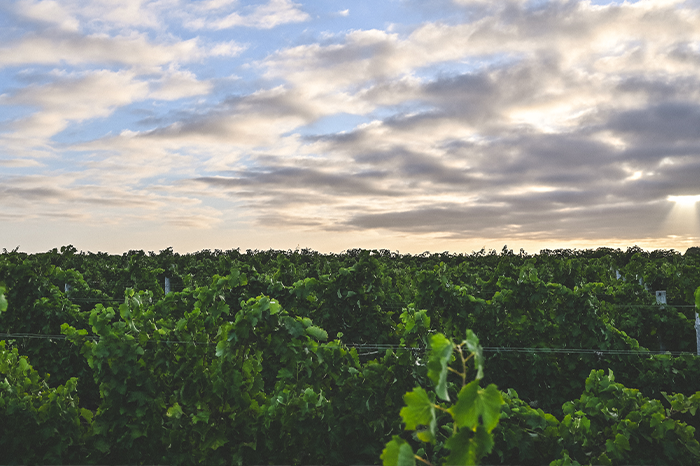
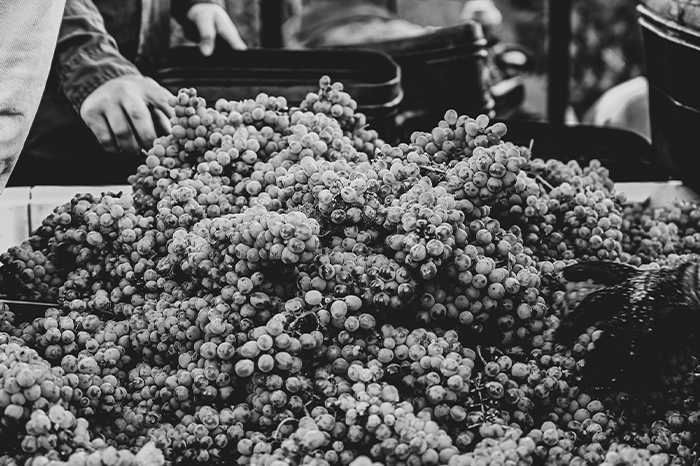
THE FUTURE OF CABERNET
Our far-flung west coast wine paradise has a rich history. For over 50,000 years, the Wadandi Aboriginal people have walked this ancient land.
The Margaret River region first saw European settlement in the 1830s and evolved from a pioneer ‘outstation’ to forestry, dairy and alternative lifestylers who enjoyed the unique coast and its surfing.
The first vines were planted in the region in the late 1960s, following research by agronomist Dr John Gladstones, who determined the viticultural suitability of the area. Voyager Estate was among the founding wineries whose plantings signalled the beginnings of the wine industry in the region – an industry that would become a big player on the world stage.
Voyager’s first vineyards were planted in 1978 and this included V9 or ‘Old Block’ as it is affectionately known. This is the vineyard located on the right as you drive in our front gates. These soils have always held the perfect amount of moisture and gravel loam for growing exceptional Cabernet, and today, this block is still producing some of the best fruit on the property. However, we can’t ignore that it’s in slow decline, as happens naturally to all vines when they’ve been living for over four decades!
So, how do we preserve the legacy of our oldest premium vineyard, so that we can continue to grow, make and share our best Cabernet for generations to come? The answer lies in some viticultural ingenuity from the vineyard team…and the cult 80s movie blockbuster, Top Gun.
For the last 40 years, our team have built up an extensive knowledge of the soil and climate in Stevens Valley through organic farming practices in the vineyard and winery. This has allowed them to explore the possibility of growing a new generation of V9 Cabernet vines to carry our legacy forward.
Dubbed the Heritage Vine Project, this process involved establishing a source block of second-generation vines for future propagation material and took many years of collecting, trialling and growing.
The process started in 2015. Over two years of seasonal culling, seven individual vines were eventually selected from the existing V9 Block based on several factors including vigour, yield, berry size and vine architecture. The team were looking for the ‘best of the best’ to become mother vines for their new generation of Cabernet – an approach that came to be known as the ‘Top Gun’ philosophy. Our Technical Viticulturist, Alex Miller, likened it to “trying to fill a job vacancy from a talented field of thousands of candidates – a daunting task!”
The final test was the most important – taste. This involved hand-harvesting the grape bunches from the short-listed vines and making mini batches of wine from each of them. The wines were tasted blind by sharp palates from across the business, and interestingly, there was consensus among the tasters which vines were the most promising.
After a series of very rigorous tests over several years, three vines made the cut. These were aptly named Maverick, Goose and Slider. Healthy canes were selected from these vines to become potted cuttings and nurtured in the nursery, which is a fascinating process. The canes are buried upside down in a damp sandpit. This ‘fools’ the bottom buds of each cutting into growing roots. After a few months they are dug up and planted into pots the right way up, with the roots in the soil and the buds exposed to sunshine grow viable shoots.
A year after growing the new generation vines in pots, we planted our three new clones alongside the original Old Block (on the same nutritious gravelly loam soil as the mother vines) and named it V9Young. We deep ripped the site to help the new vines explore the soil profile, then seeded a complex cover crop of grasses, clover, peas and daikon, and installed railway iron posts.
It's been a long, hands-on process, but seven years of hard work, dedication and commitment to organics means we now have enough vine material from the Mums to plant out the full V9Young Block (that’s 30 rows and 2600 vines!).
Propagating this young vineyard ourselves instead of buying vine material from a nursery has many advantages, including the ability to ensure the process is fully certified organic and like any nursery of babies, a watchful eye. No cases of mistaken identity here!
The team have now harvested several crops of fruit from V9Young, and Chief Winemaker Tim Shand says the results are very exciting.
“We talk a lot about attention to detail and the incremental nature of things in the vineyard. It was really inspiring this year to see the tangible results of this very detailed work – where vine selection and the DNA of an outstanding site are reflected in the fruit and the calibre of the wine made. Our V9Young block is rapidly emulating its parent block, which is a testament to our exceptional vineyard team.”
So, what does the future hold? With the wine produced from this new Cabernet block looking so promising, even from such young vines, we are very excited to see how it evolves. The hope is that with time, our next generation fruit and the three new clones will become part of the ultimate expression of our Stevens Valley soils, the MJW Cabernet. Perhaps it will even become the next step in isolating one true ‘Voyager Estate clone’ originating right here in Margaret River.
WINTER WORK
Winter is here, and whilst the vines may be hibernating, our vineyard team are hard at work, replenishing the land after a busy growing season.
The cooler months following harvest are vitally important, both to lay the foundation for new growth and to build life back into our soils, so they remain nutrient-rich and healthy for generations to come.
During this time, the team give back to the land in many ways. Creating our own organic compost involves utilising waste from the winery, gardens and vineyard, and baking it to perfection, turning the material into big mounds of nutrient-rich dirt to put back on the vineyard floor. It’s a symbiotic relationship, whereby the compost feeds the soil organisms, keeping the complex network of roots underneath the ground healthy and happy.
Another important activity post-harvest is the seeding of cover crops. Being a certified organic vineyard means we can’t use herbicides to control the weed population, so the team plant smaller, more beneficial crops to hopefully outcompete the weeds and add diversity to the vineyard floor.
Cover crops are the organic way to create ‘green manure’ – a mix of spring green growth containing nitrogen, carbon and micronutrients, that over time decomposes and feeds back into the mid-rows of the vines. The presence of cover crops also creates precious biodiversity in the vineyard, encouraging more habitats for beneficial bugs and birdlife.
At this time of year, you’ll often see our flock of resident lawnmowers loose in the vines, keeping the weeds at bay. As they wander over the vineyard floor, they also help bury the seed of the cover crops into the earth with their hooves. Not to mention, their droppings provide free fertiliser! It’s a much gentler way to nurture our fragile soils during the wet winter months, rather than using heavy machinery.
As well as our sheep, we also have our own family of ducks on the Estate. Currently they are eating up all the snails in the vineyards surrounding their enclosure. They are so good at it; no other forms of snail control are needed.
Following a successful breeding season (which saw several team members hatching and rearing the babies in their own backyards!) the flock size is now sitting at between 50 and 60 ducks, with plans for another round of breeding this spring. Amazingly, the ducks reared by our Vineyard Manager Glen Ryan (aka ‘Duck Dad’) still know him and follow him around, even after being reintroduced into the larger population! Once the mob is large enough, the team will deploy their snail-eating skills on other areas of the property.
All this vineyard care is a precursor to pruning, which usually happens from July to September, once the vines have gone into their ‘deep sleep’. As the weather grows colder and more unpredictable, our crew of pruners don their wet weather gear, often storm watching and dodging the occasional hail event, to complete the work.
Two techniques are used. Spur pruning uses one or two pairs of existing permanent, old wood canes (cordons). Each year, any new shoots that have lignified (turned rigid or woody) along the permanent cordon are cut back to just two small buds on each cane, known as spurs.
Cane pruning selects two to four young, lignified canes from the previous season and trains them along a trellis wire. The other canes are removed, and new shoots sprout from the buds on the selected canes in spring.
Whichever technique is chosen largely depends on the grape variety, vine strength and structure, and the end status of the fruit the team are trying to achieve. This crucial and labour-intensive work is what sets up the skeleton of the vine for next year’s harvest.
Even though the colder weather can be challenging at times, crisp winter temperatures help the vines achieve full dormancy, resulting in a cleaner and more even budburst. An even budburst leads to better canopy growth and ultimately, fruit yield come springtime!

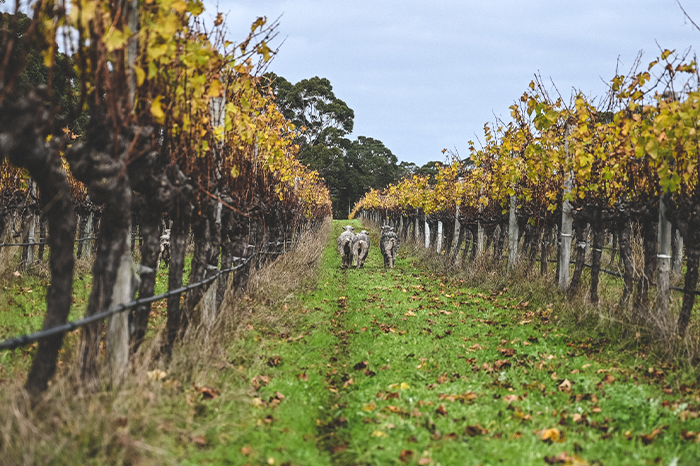

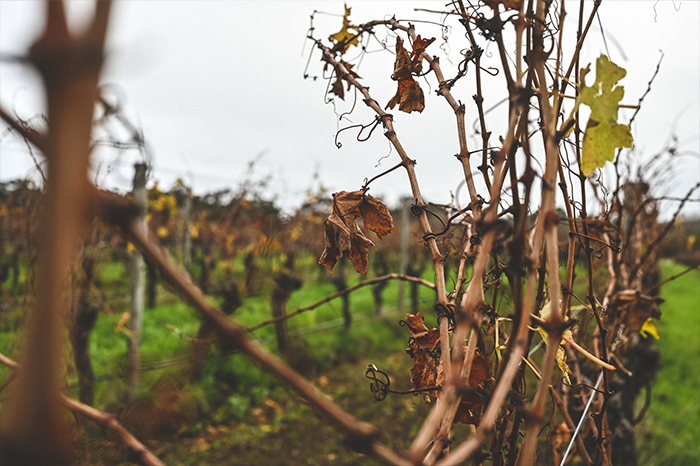


INTERNATIONAL CHARDONNAY DAY
In celebration of International Chardonnay Day on 25th May, Tim Shand shares a few musings on Margaret River's renowned white grape – from what makes it cellar-worthy, to the ideal drinking temperature...
You could argue it’s the ‘era of Chardonnay’ right now – do you agree?
Yes! I think it’s fair to say that Chardonnay has graduated to the same perception of classiness we have with red wines. The interesting thing is what’s going on internationally. People are saying that Margaret River Chardonnay is as good as any Chardonnay in the world. And it’s not just us in Australia, who’ve always celebrated one of their own. This is the likes of Jancis Robinson saying, ‘Hang on, I’ve just done a Burgundy tasting and a Margaret River tasting, and whilst stylistically different quality-wise they’re on the same level.'
What do you love about Chardonnay?
One great thing about Chardonnay is its flexibility to match with so many different foods! There are so many different expressions, depending on the vintage, style and where it’s from. These can range from quite fragile, light-bodied versions, right through to the more intense and powerful. It can pair with robust roast turkey or even duck.
How did the ’21, ’22 and ’23 vintages in Margaret River differ when it comes to Chardonnay?
’22 was defined by some warm days around Christmas. There were a couple of heat spikes. Vines basically love it up until about 32 degrees, then they go into the zone where they’re not really thinking about ripening fruit and just trying to survive! That’s where good vineyard management comes into play – whether it’s well-managed watering or resilience from organics. Better soil resilience, deeper root systems and well-balanced crops all help to take the edge off those stressors. A warmer vintage can be really rewarding because you get heaps of flavour in the Chardonnay. ’23 never got those heat spikes. It was dry, not too warm and not too cold, a perfect 28 degrees right up until harvest. By comparison, ’21 was more of a cool, savoury and restrained vintage, where the flavours are not as ripe, but the Chardonnays are super elegant and complex.
Why is it challenging making Chardonnay in the Stevens Valley in particular?
We’re further south and obviously the further south you go, the cooler it gets. We catch more of the rain hitting the southern cape. We’re hanging out that week or two longer in the dodgy time where the season turns, searching for that ripeness they get in other areas, but with more potential for things to go awry! I’d say in Margaret River things are quite delineated. There’s always this feeling that eats away at us…like when will the season turn? And then it’s a question of where you sit at that point. Are you ripe, or aren’t you? The challenge (or is it an opportunity?!) for us at Voyager Estate is that we won’t source fruit from anywhere else on the map. You don’t have the ability to say, we wanted our growth to be better this year, so we’ll just bring in some fruit from elsewhere.
Does the ‘odd versus even’ vintage theory in Margaret River still hold up these days?
Generally speaking, it has been! Our two best vintages for Cabernet were arguably 2014 and 2018, so they were evens! 2020 was also a very good Cabernet vintage. Chardonnay on the other hand is much more forgiving across those more difficult years. In fact, arguably the odd years were better than the evens! 2021 was a standout for Chardonnay.
What should we look for when deciding whether a Chardonnay is cellar-worthy?
It’s tempting to think it’s all about structure and acidity, but it’s not that simple. The fruit has to be super fresh and have incredible intensity. It’s mostly about the pedigree of the site – the aspect and soil profile. A wine’s longevity is actually the test of a truly great site. If a great site can’t live for a long time as a wine, then it’s not a great site. Broadvale Block 6 is a great example of this. There’s some initial rawness to the Broady, you can see the fruit and the oak, and the trajectory of that wine is amazing. You can see this trajectory in some of our aged releases. You will be rewarded for having patience and putting a few bottles down.
A bit of a controversial one…at what temperature do you recommend drinking and cellaring Chardonnay?
I would say for Chardonnay, somewhere between 15 to 17 degrees would be a great temperature to drink it. Serving temperature is about the wine’s body. Cold if its sparkling, Riesling, Sauvignon Blanc…and Chardonnay should probably be the warmest. Chardonnay straight from the fridge is too cold in my opinion! The ideal temperature for maturation is about 10 to 12 degrees. That’s why it’s great to have access to aged releases through a winery, or other reputable source. You know where they’ve come from and that they’ve been looked after. Many wines just won’t survive the temperature fluctuations of the Australian summer unless they’re stored in ideal cellaring conditions at a constant temperature.
In Margaret River, people talk a lot about the Gingin clone. What’s the significance?
This is an interesting story. In Australia, the vine material that was available arrived in generations, and the first generation was whatever you could get a hold of! No one really knew much about provenance. The Gingin clone produces bunches with both small and big berries, sometimes called ‘hen and chicken’. That's because it turned out the Gingin clone Western Australia received had a virus! The bunches have an inherent virus in them that causes berries to develop inconsistently. It’s weird but it just works. The crops grown from Gingin are naturally lower yielding, with a lower skin to pulp ratio, creating concentration of flavour from this weird accident of history. And it's just a true Margaret River thing, or Western Australian thing actually, that the planting material imported from California had this virus. The University of California eventually worked it out and stopped exporting those vines. By then, Western Australia had planted it everywhere, and away we went.
What can we expect from Voyager’s 2023 Chardonnay releases?
We’ll know for sure in about three months I reckon! The 2023 season was perfect up until that last week, which had a bit of a sting in its tail. What I can say is that our best white grapes ripened first (a universal truth in winemaking!) and we observed fantastic flavour (lime, pear drop...) at low baumés, as well as a lovely acidity across the board, so a sure sign of a standout vintage.



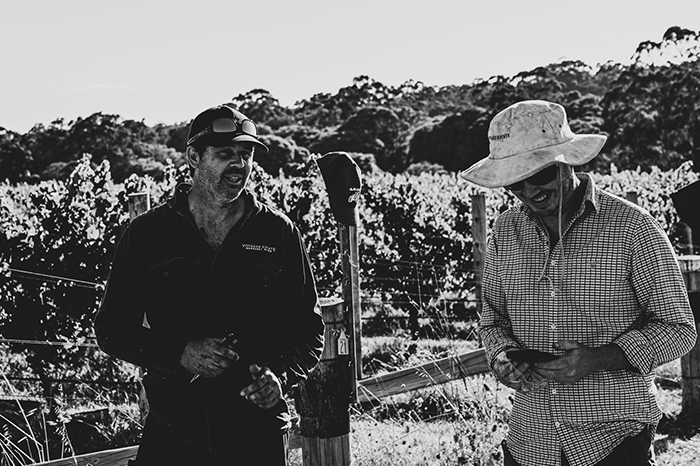
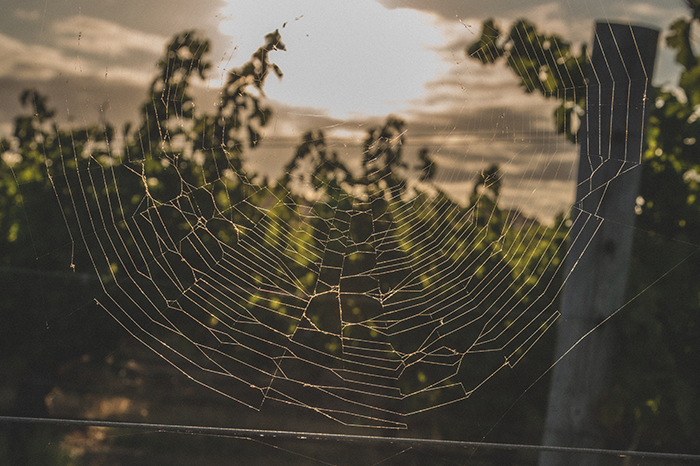

THE AGE OF CHARDONNAY
Once upon a time, Australian Chardonnay wasn’t considered a cellar-worthy prospect. We all remember those older Australian styles – perhaps they even convinced you that Chardonnay just wasn’t your thing. Big, ripe, fruit-driven, full of butter and char from time on lees and oak. All the winemaking techniques thrown in, bar the kitchen sink. Many of these wines were exceptional in their youth, but a bit of time in the cellar and they often became broad and flabby – a shadow of their former selves.
For a while, Australian winemakers responded to these big, bold wines with much leaner, even austere expressions, but thankfully, a recent shift in philosophy has brought an array of more balanced expressions to the fore, putting Australian Chardonnay squarely on the global stage. As a result of this change, there’s now many extraordinary examples on the scene that make great candidates for the cellar.
Our Chief Winemaker, Tim Shand, suggests this is very apparent when it comes to Margaret River in particular. “The interesting thing is what’s going on internationally. People are saying that Margaret River Chardonnay is as good as any Chardonnay in the world. And it’s not just us in Australia, who’ve always celebrated one of their own. This is the likes of Jancis Robinson saying, ‘Hang on, I’ve just done a Burgundy tasting and a Margaret River tasting, and whilst stylistically different, quality-wise they’re on the same level.'
Youthful Australian Chardonnay shows a range of flavours depending on where it’s grown. In cooler regions like the Yarra Valley, you can expect to see yellow citrus, grapefruit and green apple, whilst Chardonnay from more moderate climates like Margaret River show riper stone fruit, exotic fruits and intense lime.
The focus in recent years has been toward preserving beautiful natural acidity, a critical factor in ageing, whilst pulling back on things like oak use, which can overwhelm pristine fruit characters. Another element is retaining phenolics through the winemaking process – naturally occurring compounds that contribute to the taste, colour and mouthfeel of the wine – that mean it will hold up better in the bottle over time.
However, whilst these factors are important, Tim suggests the biggest factor in determining how well a Chardonnay will age is the pedigree of the site from which it’s made. “First and foremost, the fruit must be exceptional. Then, it’s mostly about the aspect and the soil profile. There are some sites that are just never going to produce age-worthy wines. A wine’s longevity is actually the true test of a great site.”
At Voyager Estate, Broadvale Block 6 is one site that consistently produces age-worthy expressions of Chardonnay. Planted to the Burgundian Clone 95 on uniform chalky soils, the block is east-facing, capturing the morning sun. It produces Chardonnay with naturally bright acid and a taut minerality. “The trajectory of that wine is amazing,” says Tim. “Well worth putting down a few bottles if you have the patience. Over time, those acids become softer and more integrated, but the wine still holds an incredible line and length. You can also expect to see more of those complex honeyed nut characters coming through.”
Another important, more practical consideration once you’ve identified a cellar-worthy Chardonnay, is storage. “The ideal temperature for maturation is about 10 to 12 degrees," recommends Tim. “There’s no point spending your hard earned and then storing the wine incorrectly. That’s why it’s great to have access to aged releases through a winery, or other reputable source. You know where the wine’s come from and that it has been well looked after over the years. Many wines just won’t survive the temperature fluctuations of the Australian summer, unless they’re stored in ideal conditions at a constant temperature.”
A 25 YEAR CELEBRATION
April marked the 25th anniversary of the official opening of the Voyager Estate Cellar Door to the public, and to commemorate this milestone, our Proprietor Alexandra Burt shares a little insight into how one man's vision came to life…
“My father and founder of Voyager Estate, Michael Wright (1937-2012), was a wheat and wool farmer, an entrepreneur and a keen traveller. He was inspired by the grand cellar doors he visited in the Cape area of South Africa. Arguably well ahead of Australia at that time, they had a focus on creating high-quality yet accessible visitor experiences. Most of the cellar doors in the Cape winelands were welcoming people seven days a week without needing an appointment – quite different to the more exclusive approach taken by the French and Italian houses. Immediately, he saw the connection between this broader approach to tourism and the burgeoning scene in Margaret River.
Armed with this knowledge from his experiences in South Africa, Michael embarked on one of his most treasured projects: building the cellar door and garden at Voyager Estate. It was a vision that came to life in multiple stages over many years and was realised with limitless passion, determination, and an unwavering commitment to detail.
Michael chose the Cape Dutch style of architecture and landscaping simply because he really, really liked it. The blend of highly-detailed, crisp, white edifices with formal yet verdant gardens had an aesthetic appeal that he thought would surely be attractive to others too – a place people would want to see and experience for themselves and a memorable way to introduce people to Voyager Estate wines.
Many gifted designers and practitioners played a role in the creation of our cellar door and garden. Perhaps the man of that hour and very much Michael’s partner-in-crime was the celebrated WA architect, Geoffrey Summerhayes. Our builder, and the local hero of this story, Gordon Temby, was also virtually a permanent staff member for the better part of ten years and knows where every pipe and conduit is buried.
Geoffrey Summerhayes’s connections in South Africa opened the door to numerous other collaborators, each an expert in their field and many of whom also became dear friends of the family. Two among these were Michael Olivier and Jay Smith. Celebrated restaurateur and chef, Michael Olivier, brought a lively and different approach to the restaurant offering, as well as the bonus expertise of his wife and front-of-house partner, Maddie, whilst Jay Smith brought warmth and hospitality to the fore with his authentic interiors.
For the first phase of the extensive, traditional Cape Dutch gardens, Michael used the expertise of the local doyenne of landscape architecture, Marion Blackwell. Marion laid out the original landscaping master plan and conjured the initial essence of the plantings that would eventually take shape. Subsequent to Marion’s contribution, Michael engaged the South African duo of Ian Ford and Deon Bronkhorst to complete the design and oversee the planting out of the garden. They, too, made an extraordinary commitment to this project, bringing passion and humility with them.
Here it is worth a special mention to our Gardens team, headed up for many years now by Lynden Davies. In particular, I’d like to shine a spotlight on our long-time in-house horticulturist, Sandra Thomas, who was part of some of the earliest developments in the garden and planted many of the mature plants you see today.
The whole project was a long labour of love. Although the building and garden were completed in 1996, it wasn’t until 1998 the Estate officially opened to visitors. Michael thought the plants and trees were too immature and not ready for public viewing so, true to his preference of getting timing right, he put the opening on hold by two years. Stage one was soon followed by a renovation, with the Restaurant opening in 2001. Also, around that time, part of the existing garden was temporarily removed to make way for the excavation and construction of an underground barrel cellar, believed to be Western Australia’s largest.
For Michael, the Cape Dutch aesthetic brought something distinct and timeless to the region. Whitewashed walls feature throughout the property, constructed in meticulous detail. These originated with the early custom of waterproofing mud brick with mortar using sand, lime and shell grit. A piece of wood and a bath sponge created the ruffled effect on the surface. Cobblestone pathways were paved with grey cobbles imported directly from South Africa, to remain true to the Cape Dutch style. (In fact, importing those cobbles was one of my earliest jobs in the business and it was so complicated that I felt qualified for my own import-export licence by the end.)
In the garden surrounding the Cellar Door, the Cape Dutch influence can be seen in the balanced axial design, which runs north-south and east-west and features distinct walled garden beds, or werf gardens, as they are known in South Africa. These are inspired by the ancient walled gardens of Persia and, as the story goes, were traditionally built to keep out lions and other predators from farms and homesteads. At the centre of these axis lines is a tranquil pond for symmetry. Thousands of plants were sourced and planted by the team to fill the iconic garden, which have taken on a new life under the organics program.
And then there is the famous lawn. In former days, so perfect was the green that many a visitor would caress the lawn under the palm of their hand to see that it was real. Since our move to organic gardening, we have had to learn to embrace imperfection as it simply isn’t possible to fashion that flawless carpet of green without chemicals. I know my father would be disappointed – he was always so proud of the lawn – but times have changed and, I suspect, so would have he.
The cellar door experience we offer today, in the Wine Room and in the Restaurant, has come a long way from those first offerings in 1998. I recently welcomed some guests whose last visit was 21 years ago – in 2002 – and they remarked how much it had changed, and yet how much it still felt the same. To me, it’s a proof point that we have, over 25 years, managed to stay true to Michael’s original promise of an exceptional wine experience, delivered with warmth and generosity, for people from all walks of life to enjoy. I know that, for as long as we maintain our dedication to sustainability, to innovation and to our team, we will always be able to offer that same spirit of welcome to anyone coming to visit this special patch of land we call home.”
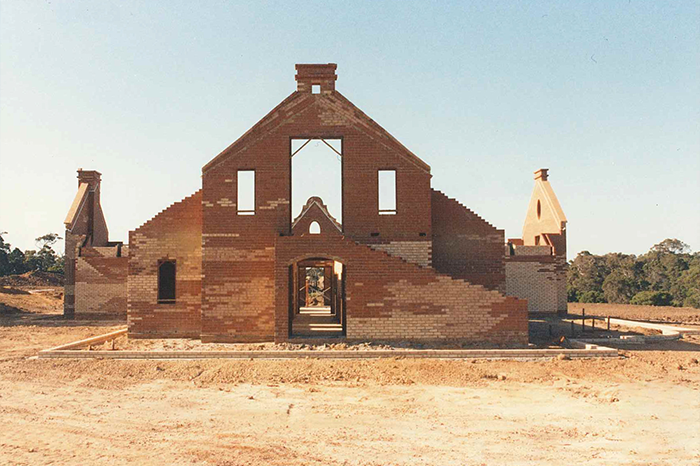
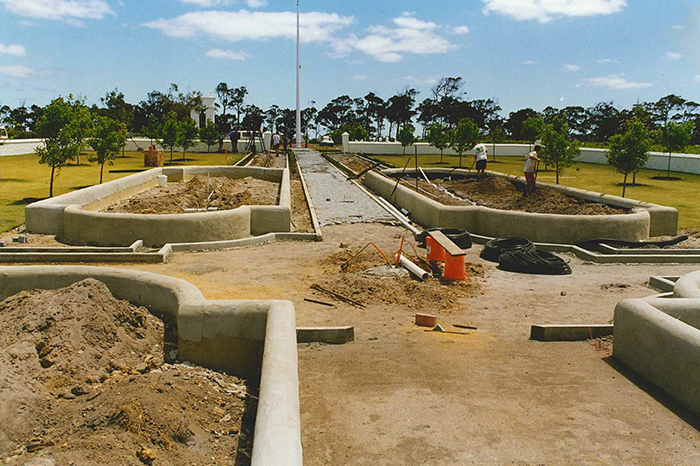


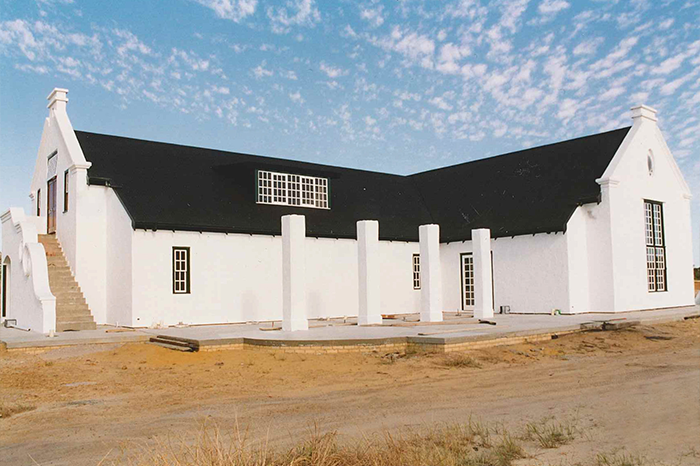

VINTAGE VIGNETTES: WEEK EIGHT
Welcome to the last in our series of snippets straight from Chief Winemaker Tim Shand, revealing all the magic and momentum of our first certified organic vintage...
"A week is a long time in the vineyard and the vintage gods opted to unleash their wrath upon us. The rain flagged in last week’s diary set in for four days, 40mm in total! Our 'wait and see' approach quickly turned into a logistical exercise of picking the remaining Cabernet blocks as quickly as possible.
With an experienced crew in vineyard and winery, we were able to flex up and with some long shifts over the weekend we were all done by Monday. That left small hand picks of Grenache and Petit Verdot on Tuesday and before we knew it Vintage 2023 was in the bag.
As the dust settles, a reassuring mix of Cabernet batches emerges, picked before and after the rain. All are free of botrytis and tannins and flavour are ripe. Despite the tough end to the season, we’ve given ourselves the elements we need to put together some very fine Cabernets and blends.
So this marks my last entry in the Vintage 2023 diary! It’s been a rewarding and enjoyable harvest with exciting wines from across our vineyard – a testament to our wonderful site and diligent team. Vintage in Margaret River is certainly a marathon not a sprint (maybe more accurately a marathon with a mad sprint at the end).
As always in the wine game, there are plenty of lingering ‘what if’s’ to get us thinking forward to the next vintage; pruning commences in a few months as we lay down the canes to see us through to February 2024. I’ll meet you back here then."


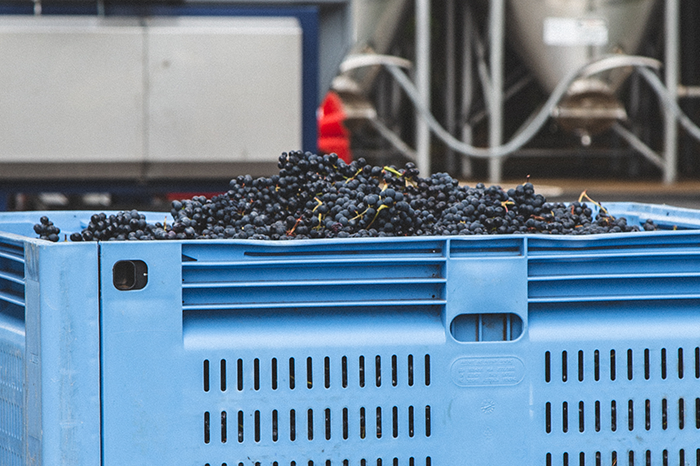
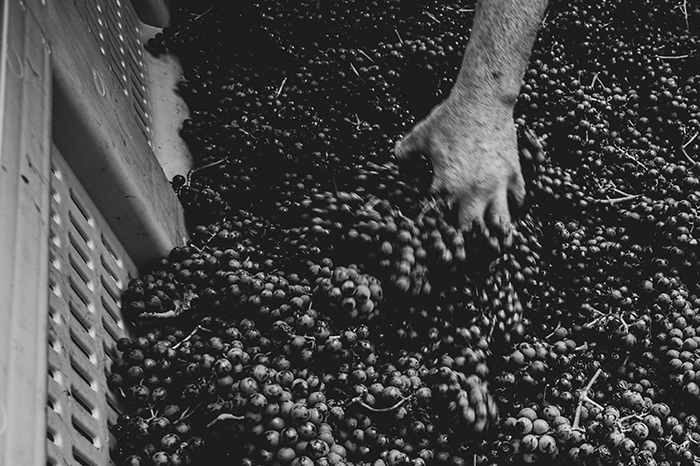
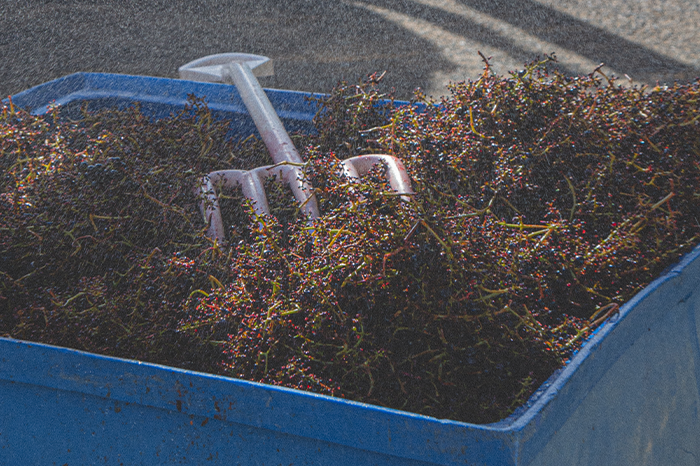
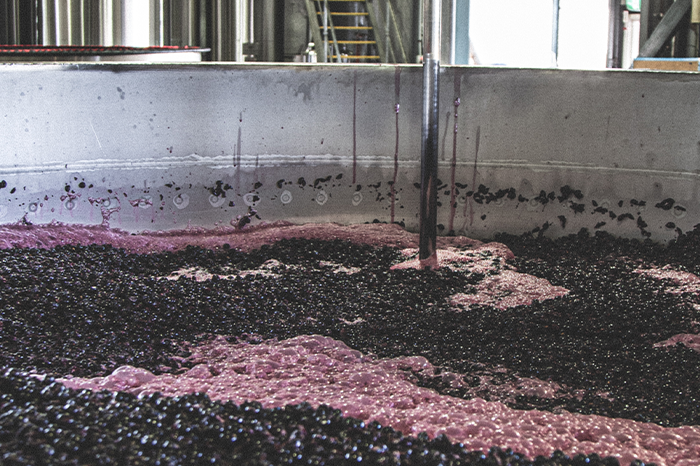
VINTAGE VIGNETTES: WEEK SEVEN
Welcome to the next in our series of snippets straight from Chief Winemaker Tim Shand, revealing all the magic and momentum of our first certified organic vintage...
"As we watch the second cold front of the week cross the capes, whoever was silly enough to call this the Goldilocks vintage is realising that with every Goldilocks comes a big angry Papa Bear at the end.
This vintage has always run about two weeks behind ‘normal’, with grape ripening slow and even, pushed out by the cool spring we had.
Like the frog in the pot, the longer it goes, the closer to the dicey change of season you get, and Easter is notorious for heralding that change in Margaret River.
We rely on three sources for our weather forecast; the Bureau of Meteorology or 'BoM' (blissfully optimistic, for those seeking solace), the Windy app (prudent and detailed, more for the intellectual) and finally the Metvuw website, whose grim colour scheme indicating imminent rain brings together the palette of Jackson Pollock with the bitter reckoning of Nick Cave. It’s best taken with three fingers of Scotch or a triple espresso.
All three sources agreed this week that trouble was on the way. Cabernet, which has had such a good run to this point, suddenly found itself exposed. On the cusp of greatness, but with disaster as its bedfellow. To pick or not to pick, it was time for decisive action. So as a true Libran, I chose both!
We’ve had red hot go in the ripe parts of our best two Cabernet blocks – V9 and U12. The tannin ripeness of the year and the bright red fruit is evident for both batches.
The remaining fruit we entrust to the vintage gods and the diligent preparation of our vineyard team, which goes right back to shoot thinning and de-lateraling in November and the open, well-ventilated canopies they laid down..."

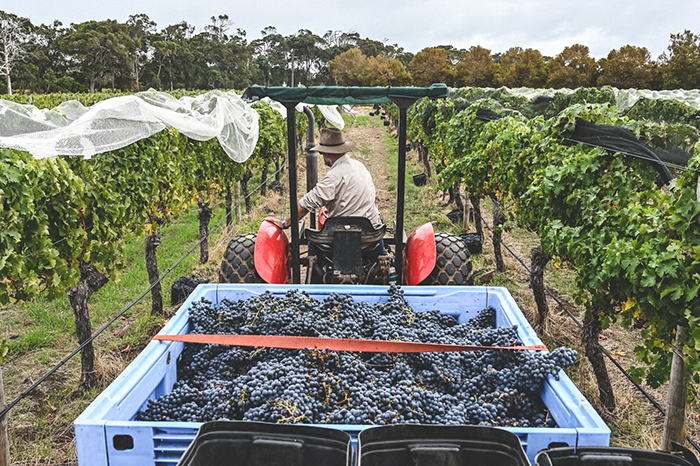
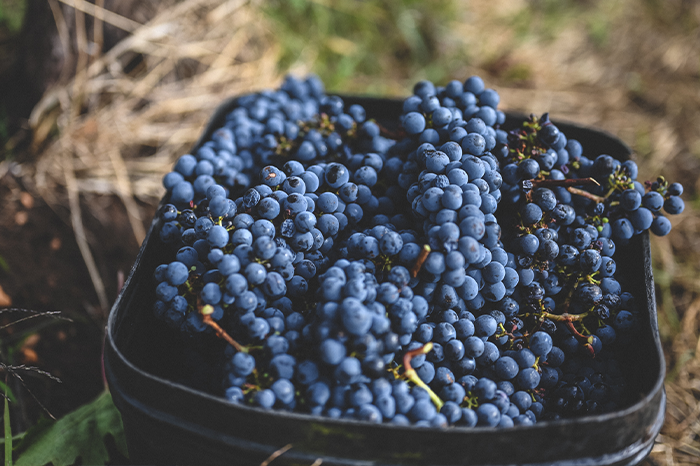
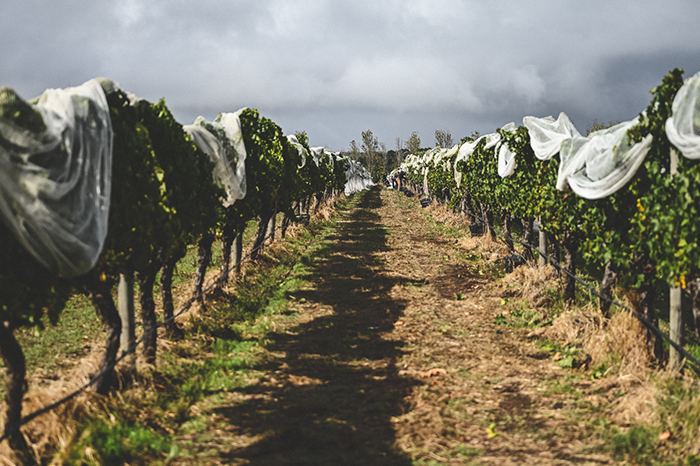
VINTAGE VIGNETTES: WEEK SIX
Welcome to the next in our series of snippets straight from Chief Winemaker Tim Shand, revealing all the magic and momentum of our first certified organic vintage...
"This week was all about Shiraz as we harvested the last fruit from the U11 Block. Chardonnay, Sauvignon Blanc, Chenin Blanc and Semillon have all ripened in a linear and predictable fashion this year, but Shiraz has been harder to track. Tannins ripened early but the fruit lacked intensity at that point.
By the same token, we are keen to pick in the ‘Syrah’ zone of ripeness (think savoury and spicy!) so we’re cautious not to let it hang too long. We anticipated including more stalks in the ferments this year, so the lignification (woodiness) of the stalks is also a factor to consider.
This being my first vintage at Voyager (and with plentiful excellent fruit to work with), we’ve had a bet each way – taking a few different approaches.
One portion we have deliberately picked a touch early, chasing pepper and tension in the wine. It won’t have the stuffing but that will come from elsewhere.
Another portion is all about ripe fruit sweetness against a wall of tannin, the muscle of the future blend.
Our approach with whole bunch is also multi-dimensional. We’ve got a small batch of 100% bunches, chasing carbonic maceration character and made in the full Beaujolais style.
Another bunch approach sees 50% bunches, 50% whole berries in one fermenter. A warm, quick natural ferment should maximise the power of this wine without over-extracting green stalk tannin.
Each of these will be pressed over the coming week or so. They’ll finish ferment in tank before being racked to oak for malolactic fermentation. It will be interesting to see how the different elements come together as a blend."




